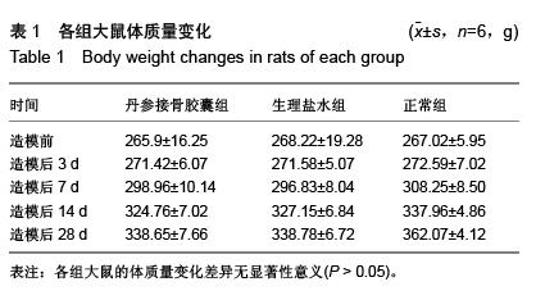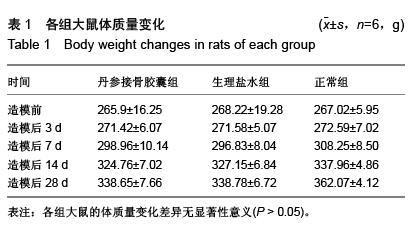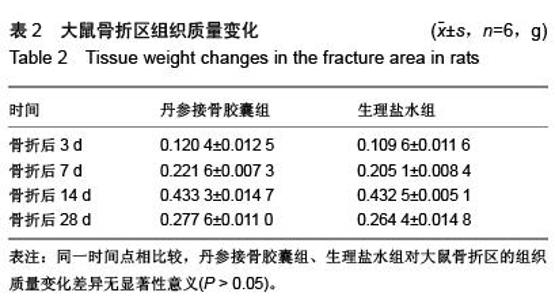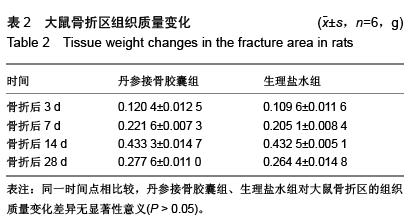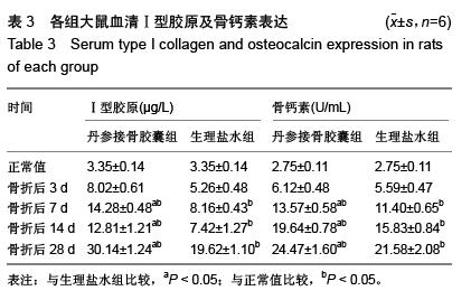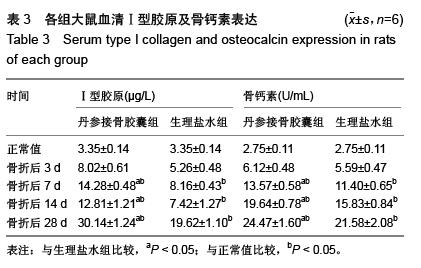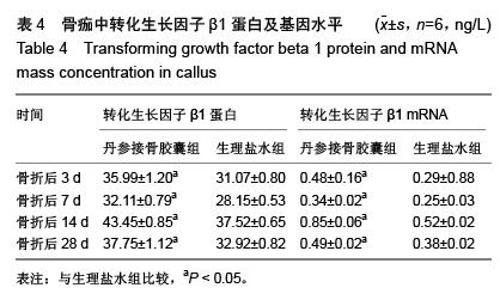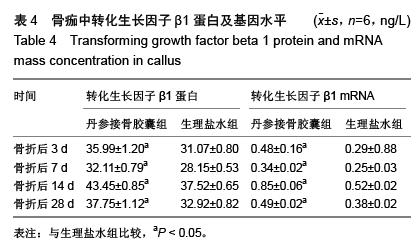| [1] 张志平,白晓春,张忠民,等.髓内针固定小鼠闭合性股骨骨折模型的建立[J].解剖学报,2012,4(1):135-138.
[2] 陈昱,陈宗雄,徐皓,等.骨折愈合机制的现代研究[J].中国组织工程研究与临床康复,2008,12(5)9951-9956.
[3] 李稻主编.医学功能学科实验原理与方法[M].北京:人民卫生出版社,2008,3:34.
[4] 谢幸财,王和鸣.中医药促进骨折愈合的实验研究进展[J].中医正骨,2010,22(12):38-40.
[5] 周正新,刘安平,王峰,等.接骨续筋胶囊促进骨折愈合作用的实验研究[J].中医药临床杂志,2008,20(2):124-126.
[6] 赵震宇,邵林,刘建宇,等.外固定方法制作的大鼠股骨骨折模型[J].中国组织工程研究与临床康复,2011,15(24):4387-4389.
[7] 王希强,孙仁光,孙仕润,等.丹参接骨胶囊对骨折SD大鼠TGFβ1 mRNA及蛋白表达的影响[J].中医临床研究,2014,6(9):95-97.
[8] 张连方,齐进,王晋申.小鼠闭合性股骨骨折模型的建立与评估[J].中国矫形外科杂志,2010,18(2):143-146.
[9] 周晓中,董启榕,张健东.大鼠股骨闭合骨折模型的制作[J].东南大学学报(医学版),2007,26(1):60-62.
[10] 李万庆.不同内固定方式治疗锁骨骨折的临床疗效分析[J],吉林医学,2013,34(8):1451-1452.
[11] 陆廷永,罗时友,周元爱.克氏针内固定治疗锁骨骨折疗效观察[J].临床骨科杂志,2008,11(4):328.
[12] 佘昶,董启榕,周晓中.两种大鼠股骨骨折模型愈合的比较[J],苏州大学学报(医学版),2008,28(1):4-6.
[13] 祁晓华,沈梅红,黄晔.针刺促进家兔骨折愈合与折伤专主血论关系初探[J],南京中医药大学学报,1999,15(3):162-163.
[14] 方芳,王平珍.丹参促进骨折愈合的研究进展[J].河南中医, 2015, 35(2):311-312.
[15] 钱茜.骨碎补化学成分和药理作用研究进展[J].中国生化药物杂志,2015,35(5):186-188.
[16] 卿茂盛,陈小砖,邹志鹏.续断对大鼠骨质疏松性骨折愈合影响的生物力学实验研究[J].中国医学物理学杂志,2002,19(3):159-160.
[17] 程志安,吴燕峰,黄智清等.续断对成骨细胞增殖、分化、凋亡和细胞周期的影响[J].中医正骨,2004,16(12):1-3.
[18] 葛文杰,张贤,蔡建平.杜仲对去势雌性骨质疏松大鼠骨代谢、骨生物力学的影响[J].山东中医药大学学报,2009,33(5):417-419.
[19] 赵根华,翁泽斌,高倩倩,等.自然铜炮制前后促进骨折愈合作用及机制研究[J].中药新药与临床药理,2015,26(4):481-485.
[20] 宋渊,李盛华,何志军.骨碎补含药血清对成骨细胞增殖、成骨的影响[J].中国骨质疏松杂志,2014,3(2):45-47.
[21] 许小志,徐志强,方耀忠,等.骨九方促进骨折愈合临床研究[J].新中医,2010,42(11):52-54.
[22] 徐建平,郭文荣.骨折愈合影响因素及中医药治疗的研究进展[J].生物骨科材料与临床研究,2010,7(6):35-37.
[23] 王力,郑甦,杨凤云,等.壮筋续骨汤对大鼠成骨细胞ALP比活性、BGP含量和Cbf l基因表达影响[J].中国中医骨伤科杂志, 2008, 16(12):24-26.
[24] 王力,郑甦,杨凤云,等.壮筋续骨汤促进大鼠胫骨骨折愈合:RT-PCR法检测核心结合子a1基因表达的验证[J].中国组织工程研究与临床康复,2010,14(20):3678-3681.
[25] Kwong FN, Hoyland JA, Fremont AJ, et al. Altered relative expression of BMPs and BMP inhibitors in cartilaginous areas of human fractures progressing towards nonunion. Orthop Res. 2009;27(6):752-757.
[26] 王祥杰,潘月兴,杜志仙,等.壮筋续骨汤对大鼠骨折骨痂中骨形态发生蛋白7和神经肽Y 表达的影响[J].中华中医药杂志, 2013, 28(8):2420-2422.
[27] 李红专.生骨再造散对家兔骨折愈合影响的实验研究[J].中国骨伤,2005(5):272-274.
[28] 徐攀峰,邵金祥,张维康.成纤维细胞生长因子2和转化生长因子β1在四肢骨折愈合过程中表达调控的研究[J].中国基层医药, 2013,20(23):3555.
[29] 宋昭君,倪卫东,高仕长.丹参注射液对骨折愈合过程中BMP-7、TGF-β1及bFGF表达的影响[J].第三军医大学学报,2013,35(3): 223.
[30] 熊辉.桃红四物汤千预骨痴血管新生及VEGF表达的实验研究[J].中国医师杂志,2014,6(2):195-197.
[31] Yu PB, Beppu H, Kawai N, et al. Bone morphogenetic protein (BMP) type II receptor deletion reveals BMP ligand-specific gain of signaling in pulmonary artery smooth muscle cells. J Biol Chem. 2005;280:24443-24450. |
